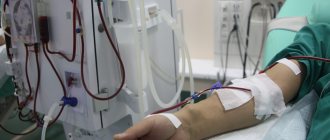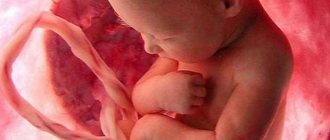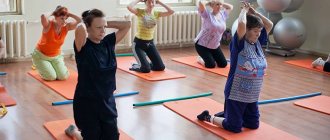Description of the disease and its signs
Gout is a metabolic disease. Due to metabolic disorders, uric acid accumulates in the joints. The acids on which the disease is based are called urates. Gout is a disease that has been known since ancient times, and it is not for nothing that it is called the disease of kings. After all, it was the kings who drank large quantities of alcoholic beverages and had no restrictions on food. This way of life has a significant impact on the kidneys, as a result of which a disease such as gout can occur. Today, gout is quite rare, but the disease is still more common among men.
This disease in women usually manifests itself after the 2nd stage of menopause, when the body is rebuilt and various diseases appear.
Also, we can say that gout is a disease of the joints, since salts that are not excreted in the urine are deposited in them. Urate salts are deposited throughout the joints of the arms and legs.
Diet food
The prescribed diet for kidney disease should limit various foods that cause the production of uric acid. Emphasis should be placed on fruits and vegetables that have diuretic properties. Damage to kidney function is often associated with poor diet or consumption of harmful foods.
If you have any kidney disease, you should immediately exclude alcoholic drinks and spices from your diet. Beer is a direct enemy of the kidneys, especially those with certain pathologies. Canned fish and poultry by-products should be excluded.
If you have gout, you should choose dark meat for food; it is better to make restrictions on light chicken breasts and some types of fish. It is also recommended to consume milk and eggs in limited quantities.
Gout with an unhealthy diet can lead to diabetes, so you should eat sweets little by little. Effective preventive measures in combination with the use of herbal infusions and a balanced diet not only reduce the risks of developing kidney disorders, but also facilitate complex therapy for gout.
There is also a certain ban on the consumption of sorrel, radishes, green and red peppers, spinach and rutabaga.
Causes of gout
Gout occurs when the level of uric acid in the blood increases, and uric acid is not excreted, but is retained in the body and deposited in joints and other organs. Urate acids can crystallize and destroy joints partially or completely. There are two main reasons in the body's functioning that contribute to the development of gout: 1. The kidneys are fully functional and in a healthy state, but there is such an amount of uric acid in the body that the kidneys are not able to filter and remove it completely.
2. The level of uric acid in the body does not exceed the norm, but the kidneys are weak and cannot remove all uric acid.
Gout symptoms
The symptoms of gout cannot be ignored. Urate salts have a destructive effect on the joints, which causes severe excruciating pain. The symptoms are especially pronounced during a “gout attack,” when the disease worsens and acute pain is felt. In addition to severe pain, there are also visible signs of gout: the appearance of growths, redness of the joint, swelling of the joint, and the joint becomes hot. Often, the disease manifests itself on the feet in the area of the big toe, and a little less common is gout of the hand, fingers, and ankles). A gout attack can last for days or weeks if the necessary treatment is not given. Attacks of gout are easy to recognize: in this case, unbearable pain occurs in any of the joints, the body temperature reaches 40 degrees. As a rule, ordinary noshpa and aspirin are not able to reduce pain. In this case, stronger painkillers are needed. A gout attack can last several hours, most often occurring at night. As the day wears on, the pain may go away, but this will not mean recovery; the attacks will recur. In most cases, gout is chronic, but despite this, treatment during exacerbation is necessary. If treatment is not started promptly, the risk of complete destruction of the joint increases significantly. In addition, you should not endure unbearable pain, but it is better to consult a doctor immediately.
As a rule, it starts in this place
Forms
Depending on which part of the kidney is affected, nephropathy is divided into the following forms:
Chronic gout can lead to more serious problems, especially if left untreated. Talk to your doctor if you have any concerns about gout or the complications it can sometimes cause. Gout attacks most often occur at night and can wake you from sleep. Continued pain may also keep you from sleeping. Lack of sleep can lead to a variety of problems, including fatigue, increased stress and mood swings.
Treatment of kidney damage due to gout
The pain of gout attacks can interfere with walking, housework, and other daily activities. Additionally, joint damage caused by repeated gout attacks can lead to permanent disability. Tophi are deposits of urate crystals that form under the skin in cases of chronic gout, or gout. They are most often found in the hands, feet, wrists, ankles and ears. Tophas feel like heavy blows under the skin and usually do not get sick except during a gout attack, when they become inflamed and swollen.
- tubulointerstitial nephritis;
- acute and chronic nephropathy;
- Urolithiasis
Based on clinical and laboratory characteristics, the following types of disease are distinguished:
- Latent. This type has a minimal number of manifestations (hidden course).
- With the formation of stones. Characterized by the occurrence of renal colic in the early stages of the disease.
- Proteinuric. Nephrotic syndrome develops, which is characterized by edema and the appearance of protein in the urine.
How to relieve pain during gout attacks?
As mentioned above, gout attacks require medical attention. However, you need to see a doctor when the attack passes. But, if the attack has already begun, then you need to provide yourself with all the conditions that will make your fate easier. First of all, you need to understand that a gout attack lasts for a certain time, and it will not go away instantly. But it is necessary to take the following measures to alleviate it (gout often affects the joints near the big toe): 1. Take a horizontal position and remain in it until the attack is over. 2. Place a pillow under your feet to create elevation. This way your legs will relax and the pain will become less intense. 3. To relieve inflammation, you can apply ice to the affected joint, since no painkillers will help. 4. Strict dietary restrictions are necessary. It is recommended to consume only liquid foods and plenty of alkaline drinks. This can be milk, jelly and ordinary mineral water without gas, to which you need to add lemon juice (breaks down uric acid). 5. If you have already had visits to the doctor and the doctor prescribed medications, you should take them.
Complications of gout
X-ray of hands with gout
This disease can provoke gouty arthritis. Gouty arthritis is a process in which gouty nodules (consisting of sodium urate crystals) are deposited throughout the body. When gouty nodes reach the joints, this is a signal to the body about a foreign body. As a result, the body turns on its protective function and provokes an inflammatory process. Gout often becomes a harbinger of urolithiasis, since if uric acid accumulates in the joints, then most likely it is present in the organs. Urolithiasis is especially dangerous, as it can lead to kidney failure, which can be fatal.
Treatment
Treatment of gout is a rather difficult and lengthy process. This disease means that a person’s lifestyle will no longer be the same, since this disease is chronic and cannot be completely cured. But, if treatment is started in a timely manner, the disease and its attacks can be controlled and the suffering of the patient can be reduced. First of all, treatment involves controlling the uric acid present in the human body. The necessary treatment will be provided by a rheumatologist who will prescribe drugs that remove uric acid. However, you should be careful with medications, as some of them can harm other organs. If you have other diseases, you should definitely notify your doctor.
Treatment for gout consists of taking non-steroidal anti-inflammatory drugs, and the course of such treatment is approximately one or two weeks (depending on the severity of the case).
Treatment with medications is aimed at solving the main problems of the disease: reducing the amount of uric acid that is in the patient’s body; reduce pain and stop the inflammatory process. After an exacerbation of the disease, remission occurs. But how long the remission will be depends entirely on the patient and his attitude towards his health. If you follow all medical recommendations, you have the opportunity to improve your quality of life.
Diagnosis of gouty kidney
It is possible to identify pathology and make an accurate diagnosis of gouty nephropathy by collecting anamnesis and conducting laboratory and instrumental diagnostics
- It is possible to identify pathology and make an accurate diagnosis of gouty nephropathy by collecting anamnesis and conducting laboratory and instrumental diagnostics. So, first of all, the specialist will study the patient’s medical history and, when diagnosing gout, will immediately focus on gout of the kidney. Confirmation will be the presence of tophi on the patient’s body at certain points. If any are found, the specialist will prescribe microscopy to identify uric acid crystals in the tophi. A confirmed test result also indicates renal gout.
- The specialist will also prescribe a general urine test to identify the salts in it and their concentration.
- In addition to this, instrumental diagnostics will be carried out. This may be an ultrasound of the kidneys and urinary system or an x-ray examination.
Important: it is worth knowing that urate stones, which are most often formed during gout, are X-ray negative. Therefore, they will be monitored using an x-ray contrast agent.
Preventing gout attacks
— It is necessary to limit physical activity on the affected joints, in case of pain, take a horizontal position and apply ice to the inflamed area. Such procedures must be done daily, which will reduce the likelihood of attacks or reduce their intensity. — You should not take aspirin, since it will not reduce gouty pain, but will only cause jumps in the level of uric acid and may cause an even worse deterioration in well-being. - You should regularly monitor your uric acid levels in your urine. Normally it is up to 60 mg/l. — You need to devote time to small physical exercises (exercise, walking, etc.) This will help prolong the remission of the disease. — To make it easier for the kidneys to cope with their function and remove excess urinary fluid, it is necessary to drink 2 liters of purified water. in a day. The consumption of tea and especially coffee should be limited, since the kidneys must also filter them. Pure water will help remove uric acid and will also help prevent other diseases of the genitourinary system. — Ensuring complete abstinence from carbonated and alcoholic drinks. — It is necessary to take vitamin C. — Reduce the consumption of protein foods, remove fatty, fried, spicy, sour and smoked foods from the diet. Today, treatment of gout with folk remedies is popular.
Pathological data
The most significant feature of gouty joint disease and the criterion for the presence of gout is the deposition of uric acid salts in the tissues of the joints. It begins early and often occurs in many joints at the same time, and in those from which no disorders are initially observed. Uric acid deposits in the joints mostly occur somewhat symmetrically on both sides of the body and can exist to varying degrees in the absence of external joints. They are found much more often on the lower extremities than on the upper, and, moreover, especially often in the metatarsophalangeal joint of the big toe and in the knee, less often in the hip joint, in the sternoclavicular joint, in the laryngeal joints, etc.
Deposits occur mainly in the articular cartilage, then in the synovium and in the fibrous joint capsule; in the further course they are formed in the circumference of the joint, especially in the tendon sheaths, mucous bursae, and also in the periosteum of the epiphyses. In fresh cases, the surface of the cartilage often looks as if it had been sprinkled with sugar. When examined under high magnification, the deposits appear mostly in the form of crystals, usually needle-shaped and located partly one next to the other, partly in the form of tufts or stars. Chemically, they consist mainly of sodium urate.
In articular cartilage, crystalline urate secretions are always surrounded by parts of tissue that present signs of necrosis. These necrotic foci occur primarily, and urate is released only into the dead tissue. Having an irritating effect on the surrounding tissue due to crystalline secretions, these lesions can be combined with inflammatory processes of a wide variety of nature. Thus, in the joints the synovial membrane, bursa and periarticular connective tissue can gradually thicken, cartilage can loosen and split into individual fibers, even carious processes in the epiphyses can develop, which explains the formation of joint disfigurements, even with displacement of bones, ankylosis, etc. On the other hand, these reactive phenomena can lead to simple encapsulation of uric acid deposits, which then remain stationary for many years or gradually resolve.
Kidney disease, which in many cases is associated with gouty phenomena, almost always manifests itself in the form of chronic nephritis with the character of a shriveled kidney, so that with an advanced process, the well-known picture of atrophic, granular kidneys with predominant atrophy of the cortical substance is observed. In many cases, changes in the kidneys are limited to this, but very often crystalline secretions of urates or uric acid are simultaneously found. These secretions are found mainly in the renal papillae and only very rarely in the cortex, and they are not only found inside the urinary tubules, but also spread into the interstitial tissue. In the circumference of these urate deposits, the same homogeneous, necrotic foci are found as in the cartilage and connective tissue. With deposits located in the cortex, urate crystals sometimes lie in place of the structureless contents of the Malpighian capsule. Sometimes gouty nephritis is combined with amyloid degeneration. In many cases, there are no large stones in the kidneys or urinary tract. If they are present, there may be phenomena of sequential pyelitis or also cystitis.
Traditional medicine for gout
Recipe 1
Chamomile is a universal folk remedy and can relieve inflammation. You can pick chamomile flowers and dry them yourself, or you can buy a ready-made collection at the pharmacy. You need to take dried chamomile flowers in a ratio of 100 g per 10 liters and let the solution brew. After the decoction has infused, you need to make a bath for the inflamed joint.
Recipe 2
Fir cones also have healing properties. You need to take a whole fir cone with seeds and pour boiling water (1.5 cups) over it. The decoction should be infused all night, and in the morning it should be taken half an hour before each meal. The procedure is used without restrictions.
Recipe 3
Bay leaf is perfect for cleansing joints of salts and uric acid. You need to take 5 g of bay leaf, pour (1.5) glasses of water, and bring to a boil, then let it boil for another 5 minutes. The bay leaf decoction should be boiled without a lid, since essential oils harmful to the kidneys should evaporate during this time. Only after boiling, the resulting decoction must be tightly wrapped and consumed no later than the day when it was prepared.
Recipe 4
Rice is an excellent joint cleaner. At the beginning, before boiling, the rice needs to be rinsed several times and left to steep in water overnight. After the rice has steeped, it must be put on the fire and boiled (repeat 4 times), after which the rice can be eaten, but do not add salt and butter. After eating rice, you should not eat for 4 hours, and it is better to eat rice in the evening before going to bed. Rice will effectively cleanse the body and reduce the level of salts in the body.
Folk remedies can provide effective assistance in treating the disease at home. After all, gout is a very serious disease that does not come alone. It is better to treat the disease with traditional methods in conjunction with medications prescribed by a doctor. In addition, if you want to use folk remedies, you should definitely discuss this with your doctor.











